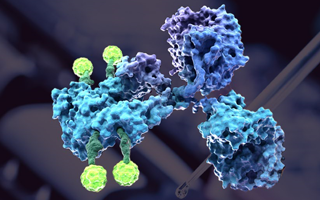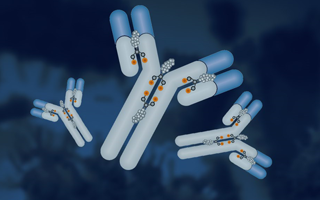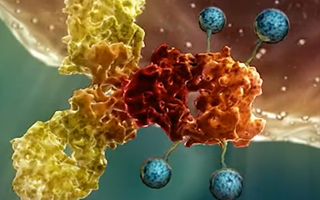Cell-Penetrating Peptide (CPP) Modification Service
As a prestigious provider in antibody discovery and development realm, Creative Biolabs adopts and applies advanced technologies to assist your innovative projects.
A prerequisite for evaluating the efficacy of antibodies (Abs) against cytoplasmic targets is their capacity of internalization. Since antibody internalization is limited by the poor permeability and the selectivity of cell membrane, scientists at Creative Biolabs can solve this issue through designing cell-penetrating peptides (CPPs) to deliver Abs into a large number of cells. Cell-penetrating peptides (CPPs), or protein transduction domains (PTDs) are a collection of short peptides (sequence contains less than 30 amino acids) with one of the following characteristics:
- Abundant in positively charged amino acids (lysine, arginine)
- Abundant in polar/charged amino acids (polycationic)
- Abundant in non-polar/hydrophobic amino acids (amphipathic)
- Hydrophobic peptides with only apolar residues and low net charge
Introduction of Cell-Penetrating Peptide (CPP)
CPPs were discovered in the late 1980s. In 1988, the trans-activating transcriptional activator (TAT) from HIV-1 was identified as the very first CPP. This peptide was proven to enable the delivery of biologically active proteins in vivo and was subsequently used in the development of associated therapeutic protein agents. Similarly, a second CPP, the third α-helix of the antennapedia homeodomain from herpes simplex virus VP22 protein, was also found to promote the delivery of associated peptides or proteins into cells. Since their discovery, the CPP family has expanded exponentially and been widely used as delivery vehicles to translocate various molecular cargoes from the extracellular environment to the cytoplasm or intracellular organelles, including chemical compounds, nano-size particles, large fragments of DNA, RNA, antisense oligonucleotide and protein, etc. CPPs are usually coupled with their cargo via covalent crosslinking or non-covalent associations.
CPPs' Applications
CPPs function in a receptor- and energy-independent manner. They can be derived from proteins but also prepared via chimeric production or in a fully synthetic fashion. Meanwhile, several sophisticated strategies have been developed to couple CPP with target protein either via covalent interactions (fusion proteins or chemical conjugation) or by forming non-covalent CPP-protein complex.
In terms of applications in cancer therapy, many CPP-protein complexes have been constructed and under evaluation, among which some show good potential as anti-cancer agents. For instance, a TAT-fused therapeutic protein could penetrate the mitochondria of breast cancer cells via lipid raft-dependent macropinocytosis to decrease the survival of cancer cells. Another study involves a novel short amphipathic peptide carrier, Pep-1 (MPG), to achieve rapid cellular absorption of various biologically active peptides and full-length Abs. The constructs showed strong stability in physiological buffer, excellent efficiency, low toxicity, and ease in preparation without the need for prior covalent chemical coupling or denaturation. Furthermore, a Phase 1 clinical trial (NCT00914914) has been completed to evaluate the safety of an experimental CPP drug (p28) as a treatment for p53+ advanced cancers, resulting in a highly favorable therapeutic index.
Creative Biolabs is dedicated to providing top-quality services to develop novel transbody through CCP-based modification. Please contact us for more information and detailed quotation.
Platform:
Intracellular Antibody Development Platform
All of our antibody products and services can only be used for preclinical research studies. Do not use them on humans.
Related Services:

Welcome! For price inquiries, please feel free to contact us through the form on the left side. We will get back to you as soon as possible.
Contact us
USA
Tel:
Fax:
Email:
UK
Tel:
Email:
Germany
Tel:
Email:







